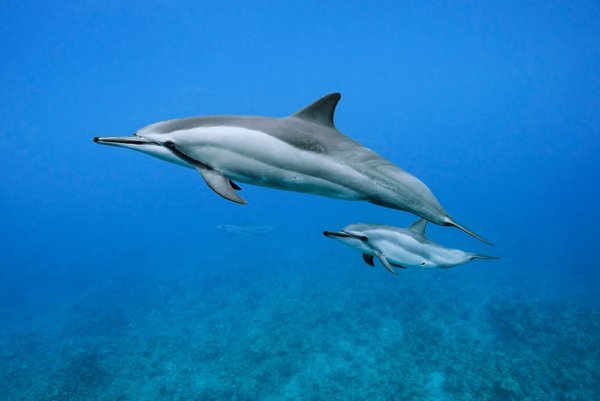
Just like a family heirloom passed down through generations, the spinner dolphin carries genes and traits that tell the story of its ancestors. Imagine tracing your lineage and discovering how your great-great-grandparents influenced who you are today. Similarly, the evolution of the spinner dolphin illustrates the incredible ways life on Earth has changed over time, shaped by various challenges and adaptations. So, let’s embark on this evolutionary journey together, diving into the intriguing past of these ocean acrobats.
What Are Spinner Dolphins?
Spinner dolphins, scientifically known as *Stenella longirostris*, are a species of small cetaceans found in warm and tropical oceans worldwide. They’re famous for their remarkable spins and flips, performing acrobatic displays that seem like a dance above the water. Typically, they grow up to about 7 feet long and weigh around 150 pounds, with a slender body that allows them to move gracefully through the waves.
These dolphins are social animals, often found in groups, or pods, that can number in the hundreds. They communicate using a variety of clicks and whistles—think of it as their own language. You might be wondering why they exhibit such playful behavior. Well, it’s believed that these acrobatics help them communicate, socialize, and even evade predators. Plus, who doesn’t love a good splash in the water?
The Ancestry of Dolphins
To understand the evolutionary journey of the spinner dolphin, we need to travel back millions of years to the ancestors of modern-day whales and dolphins. These ancestors were land-dwelling mammals that lived around 50 million years ago, during a time when the Earth was very different. Picture vast expanses of lush greenery and sprawling waters, a perfect setting for evolution to unfold.
Some of these early mammals began venturing into the water, adapting over time to their new aquatic environment. They developed streamlined bodies, flippers, and even the ability to hold their breath for extended periods. This transition from land to sea is akin to a bold leap into the unknown—a journey marked by astonishing changes. Over millions of years, these adaptations led to the emergence of various dolphin species, including the spinner dolphin we know today.
Adaptations That Set Spinner Dolphins Apart
So, what makes spinner dolphins particularly unique among their dolphin relatives? One notable adaptation is their impressive agility and speed. Spinner dolphins can reach speeds of up to 20 miles per hour, which helps them evade predators and catch their favorite meals—small fish and squid. Their ability to leap and spin is not just for show; it’s a vital part of their survival strategy.
Another fascinating aspect is their social structure. Spinner dolphins often form strong bonds within their pods, which plays a crucial role in their survival. These social interactions help them coordinate during hunts and protect each other from threats. Imagine a close-knit community working together to navigate the challenges of ocean life—it’s a beautiful example of evolution favoring cooperation.
Environmental Influences on Evolution
The environment plays a key role in the evolution of any species, and spinner dolphins are no exception. Over time, changes in ocean temperature, food availability, and predator presence have all influenced their development. For example, as ocean temperatures fluctuated due to climate change, spinner dolphins had to adapt their hunting and migration patterns.
Additionally, the rise of human activity—like fishing and pollution—has posed new challenges for these dolphins. They have to navigate the complexities of human-made environments, which can affect their behaviors and even their health. This ongoing relationship between spinner dolphins and their environment illustrates the theme of adaptation—how species evolve in response to their surroundings.
The Spinner Dolphin’s Role in Marine Ecosystems
Spinner dolphins play an essential role in the marine ecosystem. By preying on small fish and squid, they help maintain the balance of marine life. In a way, you could think of them as nature’s regulators, helping to ensure that no single species overwhelms the ecosystem.
Moreover, their presence impacts not only other marine creatures but also the health of ocean habitats. Healthy dolphin populations indicate a thriving marine environment, as they contribute to nutrient cycling and prey dynamics. It’s like a carefully balanced ecosystem where each part plays a vital role in the overall health of the ocean.
Conservation Challenges and Efforts
Despite their resilient nature, spinner dolphins face numerous threats. Overfishing, habitat degradation, and pollution pose significant risks to their populations. Furthermore, the noise pollution from boats can disrupt their communication and hunting behaviors, leading to stress and disorientation.
Conservation efforts are crucial to protect these remarkable creatures and their habitats. Organizations around the world are working to establish protected marine areas, promote sustainable fishing practices, and raise awareness about dolphin conservation. Every effort counts, and it’s essential for us to support actions that ensure the survival of spinner dolphins for future generations.
The Future of Spinner Dolphins
Looking ahead, the future of spinner dolphins depends on our commitment to conservation and understanding their unique evolutionary journey. Each spinner dolphin holds a wealth of information about the past and present of marine life. As we learn more about these incredible creatures, we can appreciate how their adaptability has shaped them into the playful dolphins we admire today.
By valuing and protecting the marine environments where spinner dolphins thrive, we can help ensure that their evolutionary legacy continues. So, the next time you see a dolphin leaping through the waves, remember—there’s a rich history behind their acrobatics, filled with adaptation and resilience. Honestly, there’s something inspiring about that, don’t you think?
In conclusion, the story of spinner dolphins is a remarkable tale of adaptation and survival. They’ve evolved over millions of years to become the incredible creatures we see today. By understanding their journey, we not only deepen our appreciation for them but also our commitment to protecting their future in an ever-changing world. Together, we can help keep the oceans vibrant for spinner dolphins and countless marine species alike.
